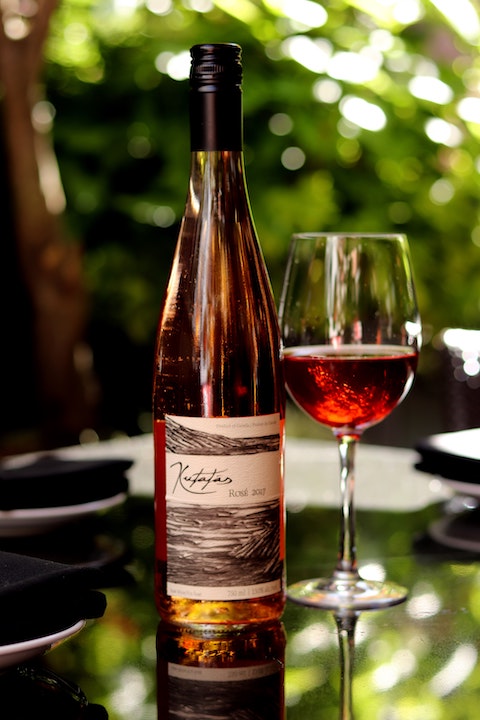Wade Cothran | Sep 24, 2020
Your Guide to the Top Five Types of Wine Bottles

Whether you’re a wine aficionado or just a casual fan, you’ve probably noticed that not all bottles look the same. In fact, wine bottles are a bit like people: they come in all shapes and sizes. From tall skinny ones to short and squat ones, bottles with strong shoulders, and bottles with round bottoms. And just like everything in the world of wine, there are histories, traditions, and stories behind each one.

Why are there so many different types of wine bottles?
Different wine regions have different bottles
In 18th century France, wine bottle styles were strongly associated with the region they came from. These French wine regions were competing, and there wouldn’t have been as much travel between the areas as there is today. After several decades, what was commonplace in a certain region, became tradition. And that ‘traditional’ shape became in turn, associated with that region.
Originally, bottle shapes would have been a quick and easy way for merchants and customers alike to identify their favorite French wine. Today, associations are somewhat subtler.
The bottle styles have become so ingrained with the wine styles they carry, that other countries have continued the practice.
Different types of grapes have different bottles

For example, full-bodied red wines made from traditional Bordeaux grapes (we’re talking Cabernet Sauvignon, Shiraz, Merlot, and Cabernet Franc) will almost exclusively be sold in ‘Bordeaux’ style bottles. It doesn’t matter if the wine was vinified and bottled in Cape Town, Florence, or Napa Valley. If it’s made from a Bordeaux grape, then it will probably be bottled in a Bordeaux bottle. The same principle goes for grapes which have a heritage in Alsace, or Burgundy, or several other regions: the bottle shape reminds us of where that style of wine was born.
Is there a chemical reason for all these different wine bottle shapes?
The jury is still out on this one. Like most wine-topics, there are a lot of myths and theories and speculations. Some wine experts have theories regarding bottle aging, tannins, and acids, etc. There might be some truth to these ideas, and there might not. The big exception is the Champagne bottle, which is designed especially to withstand carbonated pressure.
So, what are the five traditional types of wine bottles?
#1: The Bordeaux Bottle

Let’s start with the most well-known of all the wine bottle shapes. The Bordeaux can be found in every wine-producing country on Earth and is easily recognized by its tall, high-shouldered shape, boasting neat straight lines and long sides. It’s said that these bottles were originally made in this way to make stacking them easier, in a boat.
This bottle shape is the most widespread across the world. This speaks volumes about the global reach and popularity of Bordeaux grape varietals. Cabernet Sauvignon and Merlot took California by storm. Syrah got renamed Shiraz and became the signature grape of Australia. Malbec became a Latin American standard. White wines like Semillon, Chenin Blanc, and Sauvignon Blanc - all Bordeaux traditional white grapes - were embraced by Australia, South Africa, and New Zealand respectively. No wonder, then, that the Bordeaux bottle is so ubiquitous today!
#2: The Burgundy Bottle

You could easily confuse a Burgundy bottle with a bottle of champagne. It has the same sloping curved neck, as opposed to the Bordeaux bottle. But unlike champagne, this bottle has a shorter neck and skinnier width. Because it lacks any straight lines, we can assume that Burgundy bottles would once have been hand-blown, which speaks to the artisanal values that the region once championed.
Usually, Burgundy bottles feature signature Burgundy styles of wine, like Pinot Noir and Chardonnay. However, they’re often found in regions of Italy and Greece, where similar (though not Burgundy-grape-based) wines are also popular.
#3: The Rhone Bottle

If you’ve recently picked up a classic Grenache, Marsanne, Viognier, or Roussanne wine, then the chances are, it will have come in a Rhone-style bottle. These bottles are quite similar to Burgundy bottles - they have the same gentle lines and broad bottomed shape. The difference is that they usually have a longer neck, and are usually a bit taller, and skinnier. Traditional Rhone wines also have an embossed badge on the front. This tradition is going out of style though, and can now only be found on more expensive (overpriced?) wines.
#4: The Champagne Bottle

Didn’t know champagne was technically a French wine? It is! The Champagne bottle is similar looking to the Burgundy. It was also originally hand-blown. But because champagne is a carbonated wine, the Champagne bottle is thicker and heavier to withstand high levels of pressure from all the bubbles. Similarly, the champagne flute was designed to keep all the bubbles from escaping! You might notice that the champagne bottle is also wider than both the Burgundy and the Rhone.
#5: The Alsace Bottle

The wine bottles of Alsace are arguably the most beautiful bottles in the world. They are tall, and thin, and look like they were just stretched out on a taffy machine. If taffy looked incredibly elegant and sophisticated. And promised the same sharp minerality and bright, zesty, flavors associated with Alsatian wines.
Despite being called ‘Alsace’, these bottles were actually pretty widespread, right through the eastern regions of France and into Germany, Austria, Hungary, and beyond. Originally appearing in the disputed French-German borderlands, they’re most commonly associated with Riesling, Gewurztraminer, Gruner Veltliner, and Pinot Gris and Blanc wines.
There you have it! The five most common wine bottles: Bordeaux, Burgundy, Rhone, Champagne, and Alsace. We hope you enjoy your next bottle of wine with our favorite wine bottle style made by BrüMate. Your BrüMate will keep your wine at the ideal drinking temperature, better than their more famous French counterparts. Ideal for al-fresco drinking, they never fail to make a big impression!